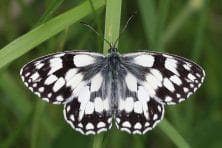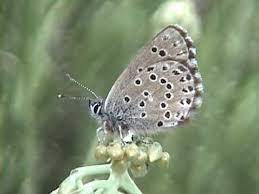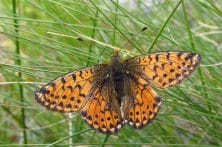Butterflies in Italy
It is no secret that millions of tourists descend upon Italy every year. Some come to sample the culinary delights that make Italy famous around the world. Others come to visit the plethora of Ancient Roman monuments which give us a glimpse of a bygone age. And some come in the hope of catching a glimpse of one of Italy’s many beautiful butterflies. If your idea of a perfect holiday is immersing yourself in nature and wildlife, our guide will help you to plan the perfect butterfly-spotting holiday in Italy. Read on to find out which species to look out for, where and when to go, and what makes Italy so special when it comes to butterflies.
Why Is Italy so Great for Butterflies?
One of the reasons Italy makes the ideal destination for any avid butterfly enthusiast is the country’s unrivalled dedication to butterfly conservation. Europe is home to a staggering 576 species of butterfly. Sadly, 76 of these beautiful creatures are currently considered endangered due to climate change and loss of habitat. In an effort to protect these species, Europe has now created 431 Prime Butterfly Areas. These are Key Biodiversity Areas which prioritise conservation and study of local butterflies. With 32 Prime Butterfly Areas, Italy boasts more than any other European country, making it perfect to spot a wide range of different species.
Italy is home to more than 260 species of butterfly, and 20 of those are endemic to Italy. These are found from the north of the country to the south, so there is a destination so suit everyone.
Butterfly Species to Look Out For
With over 260 species of butterflies native to Italy, there is no shortage of types to look out for. However, there are some species which are found only in Italy, so worth looking out for.
Italian Marbled White (Melanargia Arge)– While the White Marbled butterfly is common throughout Europe, the Italian White Marbled is much rarer. With more intricate black designs, they can be found on Italy’s mainland. To catch a sight of one of these, look out a slope that is dry and stony.

Sardinian Blue (Pseudophilotes Barbagiae)– This unassuming butterfly actually has wings of a dusky grey, with only the subtlest hint of blue. They are found in a small geographical area around Mount Gennargentu in Sardinia. They tend to fly low to the ground amongst grass, making them difficult to spot. In fact, they are so hard to spot they were only recognised as a species in 1982.

Mountain Fritillary (Boloria Napaea)– This russet-coloured species has delicate markings of black across its open wings. Found in Northern Italy, these butterflies can be found living in mountainous areas such as the Alps, Pyrenees, and Scandinavia. They are known as quick fliers that stick close to the ground.

Where to see Italy’s Butterflies
With 32 Prime Butterfly Areas, butterflies can be seen almost everywhere throughout Italy. However, if seeing these creatures is your main objective, there are certain areas where you will find an abundance of butterflies, including those species found only in Italy.
Many of Italy’s butterflies prefer to live in mountainous conditions, so The Alps and Dolomites are great destinations.
The Alps- The Alps are a mountain range which run through the north of Italy and a number of other European countries, including France, Switzerland, Austria and Slovenia. The cooler climate and grassy mountain sides are ideal for many butterfly species and it is possible to find over 200 different varieties here.
The Alps boasts a number of national parks which are ideally placed to catch a glimpse of some of Italy’s butterflies. One great option is the Regional Park delle Marittime. This park is linked to the French Mercantour National Park. These twinned parks protect an impressive 100,000 hectares which are home to some beautiful valleys offering prime butterfly habitat. If you visit here, make sure you visit the Valasco valley. Home to 75 different species, here you can spot the Tufted Marbled Skipper and Titania’s Fritillary.
The Dolomites- Running across Italy’s north-eastern border, the Dolomites offer a great opportunity to butterfly hunt. Unlike the Alps, they are prone to frequent thunderstorms during the summer months, making it a more frustrating, yet more rewarding, experience. If your hard work pays off, you will be able to see the Clouded Apollo, Large Chequered Skipper, and Thor’s Fritillary.
Other areas to explore are The Stelvio National Park north-east of Bormio, the Apennines, a mountain range between Genoa and Calabria, and Sicily.
When Should I Go?
Butterflies have a very short lifecycle, so planning your trip is important to ensuring you have the best possible chance of seeing as many species as possible. When visiting Italy, the optimal time to visit is late June and early July. This is time when the majority of butterflies are ‘on the wing’ or flying around, with it being possible to catch sight of more than 200 species in Italy. While other varieties are active at other times of this year, visiting in June and July gives you the best chance of seeing a good range.
If you enjoy getting close to nature and wildlife while on holiday, exploring Italy and its butterflies is a perfect trip for you. With most species living around the Alps, it is a beautiful part of the country to explore.




